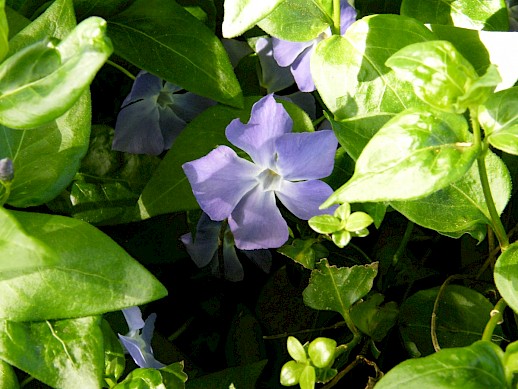Pretty periwinkle a real pest
Periwinkle is a common plant in old homestead gardens, cemeteries and woodland areas. Hailing from the Mediterranean, and once widely planted throughout New Zealand as an effective groundcover in shaded areas and on steep banks, periwinkle is a vigorous, prostrate, rambling perennial. Dark green leaves occur in opposite pairs on long, slender, trailing stems. Pretty solitary, violet blue, five-petalled flowers appear year round. The variegated form, with cream and green leaves, is equally as vigorous and troublesome.
It is easily spread through the dumping of garden waste and contaminated soil. Having a creeping, layering habit, combined with rhizomes and stems that root easily, allows periwinkle to form dense, long-lived stands. It is especially tolerant of dense shade and therefore capable of smothering the forest floor, thus preventing the establishment of native seedlings. Periwinkle also inhabits many other areas including shrublands, streamsides, coastline, fernlands and rocky outcrops, where it smothers existing plants and opens up the area to invasion by taller, weedy species.
Periwinkle is extremely difficult to kill. Dig out small areas and dispose of plant material at a refuse transfer station or burn. For larger stands, spray with: 20 ml/L glyphosate + penetrant. Follow-up twice annually in spring and autumn, and spray resprouting pieces with 30 ml/L glyphosate + penetrant. Continue followup treatments for three or more years. Large, flat areas can also be mown 2-3 times a year, followed by grubbing out roots, or covered in black plastic and left for six months. Dig out surviving plants and follow up regularly to check for regrowth.
REPLACE IT: Once eradicated, replant with: native panakenake (Pratia angulata) or creeping fuchsia (Fuchsia procumbens); or exotic speedwell (Veronica prostrata).
